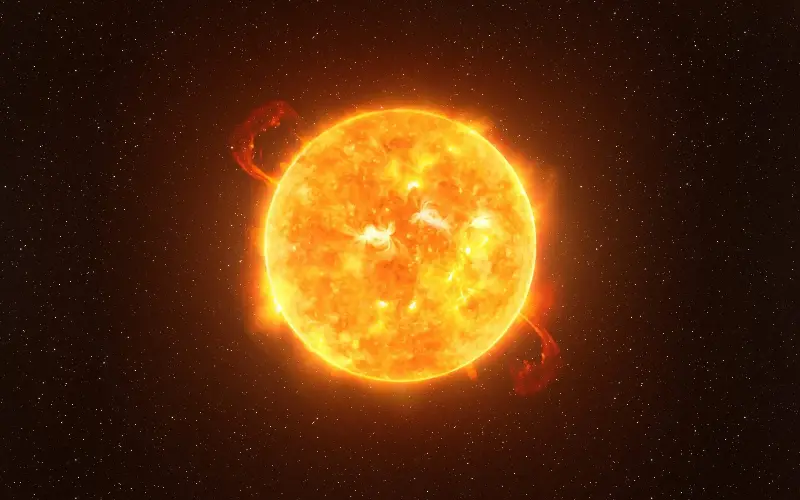
Look up on a clear night and you will see a bright red star sitting on the shoulder of the constellation Orion.
It is Betelgeuse and for hundreds of years astronomers have puzzled why its twinkle grows lighter and then dimmer over time.
But the mystery has finally been solved.
Betelgeuse has a companion star that pushes light-blocking dust out of the way, temporarily making the star glow more brightly.
The presence of the star, nicknamed “Betelbuddy”, had been theorised, but Nasa has spotted it for the first time using its Gemini North telescope, in Hawaii.
Steve Howell, a senior research scientist at the Nasa Ames Research Centre, in California, said: “Papers that predicted Betelgeuse’s companion believed that no one would likely ever be able to image it.
“Gemini North’s ability to obtain high angular resolutions and sharp contrasts allowed the companion of Betelgeuse to be directly detected.”
Betelgeuse, roughly pronounced as “Beetlejuice”, which was the inspiration for the character of the same name, sits about 650 light years from Earth and glows 100,000 times brighter than the Sun.
It is so big that if it sat at the centre of the Solar System, in the position of the Sun, its surface would lie further out than Mars and the asteroid belt.
It is known as a variable star, getting brighter and dimmer every 400 days. It also has a longer phase of change that lasts about six years.
The striking red star was noted as far back as Ptolemy in the first century AD and its changing brightness has puzzled astronomers for millennia.
In 2019 and 2020, there was a steep decrease in Betelgeuse’s brightness – an event referred to as the “Great Dimming”, which led to some scientists suggesting its dulled twinkle was foreshadowing an impending supernova that would darken the star for ever.
However, it turned out that the star had emitted a large gas bubble, which then cooled to form dust, temporarily blocking its shine.
The Great Dimming mystery sparked a renewed interest in studying Betelgeuse and getting to the bottom of its strange twinkle.
Scientists proposed a second star might be responsible, but when the Hubble Space Telescope and the Chandra X-ray Observatory searched for it, they found nothing.
It was not until researchers used a special technique called “speckle imagine” that the star was discovered.
Speckle imaging uses very short exposure times to freeze out the distortions in images caused by Earth’s atmosphere, enabling high resolution, which, when combined with the light-collecting power of Gemini North, allowed the new star to be seen for the first time.
Martin Still, programme director for the International Gemini Observatory, said: “Delivering the solution to the Betelgeuse problem that has stood for hundreds of years will stand as an evocative highlight achievement.”
The new star is estimated to be about 50 per cent bigger than the Sun, but has not yet burst into the full nuclear fusion hydrogen burning that would make it more visible.
The companion is relatively close to the surface of Betelgeuse – about four times the distance between the Earth and the Sun – and the pair were probably born at the same time.
However, the companion star will have a shortened lifespan as strong tidal forces will cause it to spiral into Betelgeuse, being absorbed into the larger star in the next 10,000 years.
Discovery of the new star was published in the Astrophysical Journal Letters.
